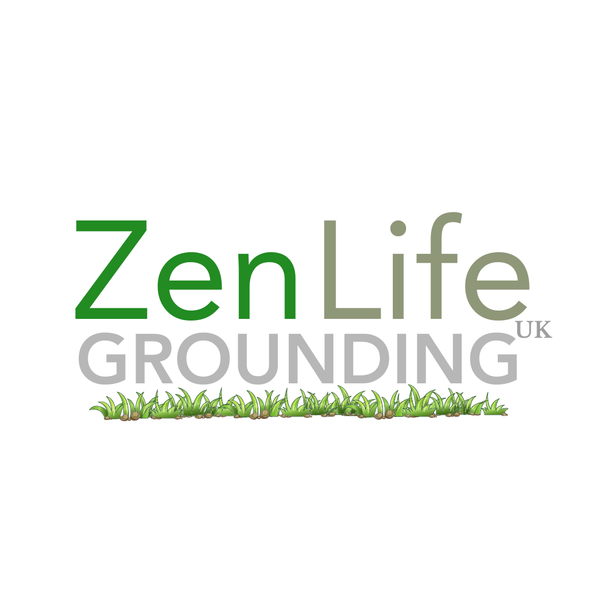In the realm of wellness and holistic health, the terms "grounding" and "earthing" are often used interchangeably. Both practices involve connecting with the earth to harness its natural, healing energies. However, subtle distinctions can be made between the two, particularly in how they're practiced and perceived within different contexts. This article aims to clarify the difference between grounding and earthing, providing insight into how each contributes to well-being.
Understanding Grounding
Grounding, in the broadest sense, refers to the process of establishing a direct electrical connection to the ground or earth. In electrical engineering, this is a safety measure to prevent unwanted voltage on electrical devices. In wellness, however, grounding is viewed as a therapeutic practice. It involves activities that promote the physical, emotional, or spiritual grounding of an individual. This can include meditation, mindful walking, or simply sitting and observing nature. The goal of grounding is to bring oneself into a state of balance and presence.
Exploring Earthing
Earthing specifically refers to the direct contact with the earth's surface — walking barefoot, sitting, or lying on the ground — to absorb the earth's electrons. The premise is that the earth maintains a negative electrical potential on its surface, and direct contact with it can help neutralize free radicals in the body, reducing inflammation, stress, and pain. Earthing is often associated with physical health benefits, supported by various studies that suggest improvements in inflammation, cortisol levels, sleep, and autonomic nervous system function.
Key Differences
Context and Application
- Grounding is often used in a broader, metaphorical sense, encompassing practices that help an individual feel more present, balanced, and emotionally centered.
- Earthing is used specifically to describe the physical act of connecting with the earth's electrical charge, emphasizing the physiological benefits of such contact.
Practices
- Grounding can be practiced in various environments, including indoors, and doesn't necessarily require contact with the earth.
- Earthing requires physical contact with the earth's surface, such as soil, grass, or sand.
Benefits
- While both grounding and earthing are believed to promote overall well-being, grounding is more often associated with mental and emotional benefits.
- Earthing is primarily discussed in the context of physical health benefits, particularly those related to the body's electrical nature and inflammation.
Conclusion
Though grounding and earthing are closely related and sometimes used interchangeably, understanding their nuances can enrich our approach to wellness. Both practices offer valuable pathways to improved health, whether through physical connection with the earth or activities that foster emotional and spiritual balance. Embracing both grounding and earthing in our lives can lead to a more holistic sense of well-being.
FAQs on Grounding and Earthing
Q: What is grounding?
A: Grounding, in the context of health and wellness, refers to the practice of connecting one’s body directly with the earth’s surface electrons. This connection is believed to promote physical and emotional health benefits by neutralizing free radicals and reducing inflammation.
Q: What is earthing?
A: Earthing is another term for grounding. It involves making direct contact with the earth's surface to harness its natural, healing electrical charges. The terms grounding and earthing are often used interchangeably to describe the same process of connecting with the earth’s energy.
Q: Are there any differences between grounding and earthing?
A: In the context of wellness and health benefits, grounding and earthing refer to the same practice. Any differences are purely semantic. Both terms describe the method of connecting with the earth to improve health outcomes.
Q: What are the benefits of grounding/earthing?
A: Grounding/earthing has been associated with a variety of health benefits, including improved sleep, reduced inflammation, decreased stress, enhanced circulation, and a better overall sense of well-being. These benefits are attributed to the transfer of negatively charged electrons from the earth to the body.
Q: How can I practice grounding/earthing?
A: You can practice grounding/earthing by walking barefoot on natural surfaces like grass, soil, or sand. Alternatively, earthing products like mats, sheets, and bands can be used to create a conductive path between your body and the earth, even while indoors.
Q: Is there scientific evidence supporting grounding/earthing?
A: Yes, there is a growing body of scientific evidence indicating that grounding/earthing can have several positive effects on health, including reducing inflammation and improving sleep. However, more research is needed to fully understand the extent and mechanisms of these benefits.
Q: Can grounding/earthing improve mental health?
A: Preliminary research and anecdotal evidence suggest that grounding/earthing can help reduce stress and anxiety, potentially improving mental health. The calming effect of connecting with the earth may help to decrease cortisol levels and promote relaxation.
Q: How long should I practice grounding/earthing to see benefits?
A: While some individuals report feeling benefits from grounding/earthing immediately, others may find it takes several weeks of consistent practice to notice significant changes. Incorporating grounding/earthing into your daily routine is likely to yield the best results.
Q: Are there any risks associated with grounding/earthing?
A: Grounding/earthing is generally considered safe for most people. However, it’s important to practice it safely—avoid grounding in hazardous areas, such as places with high electrical activity or when there is a risk of lightning strikes.
Q: Where can I learn more about grounding and earthing practices?
A: For more information on grounding and earthing, consider exploring scientific journals, wellness blogs, and books dedicated to the subject. Websites focusing on natural health and wellness practices also often provide valuable insights and practical tips.
.

